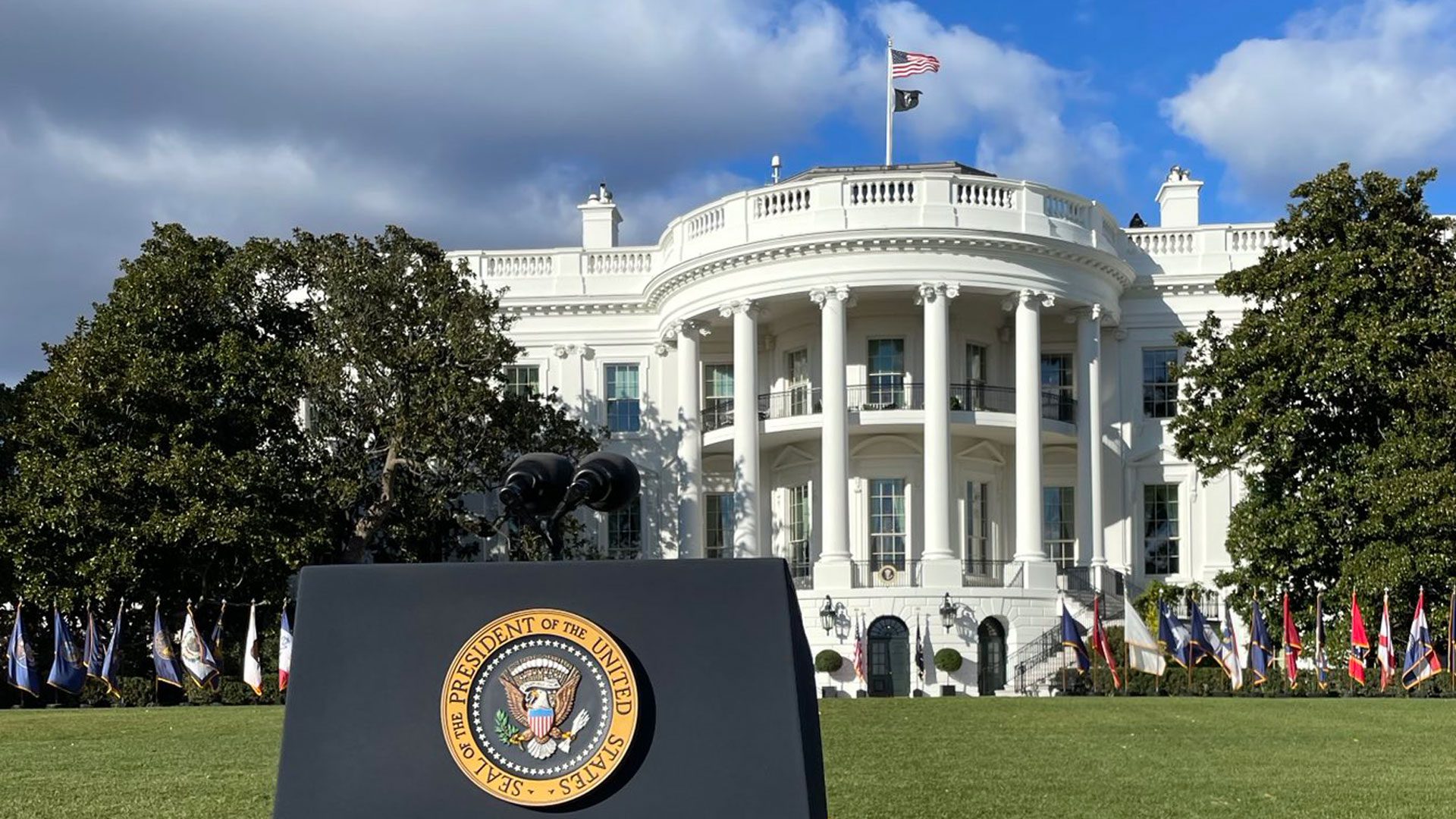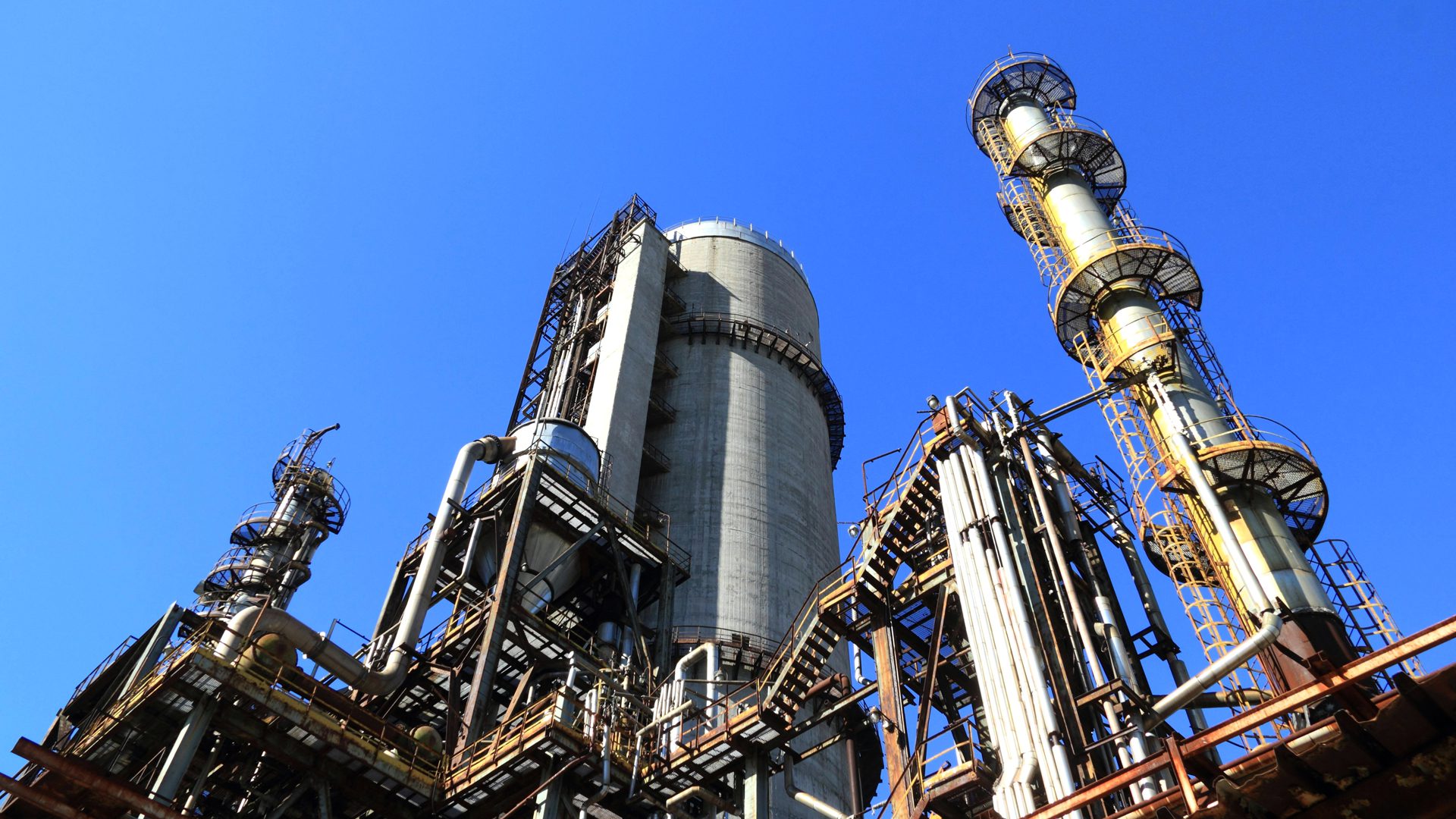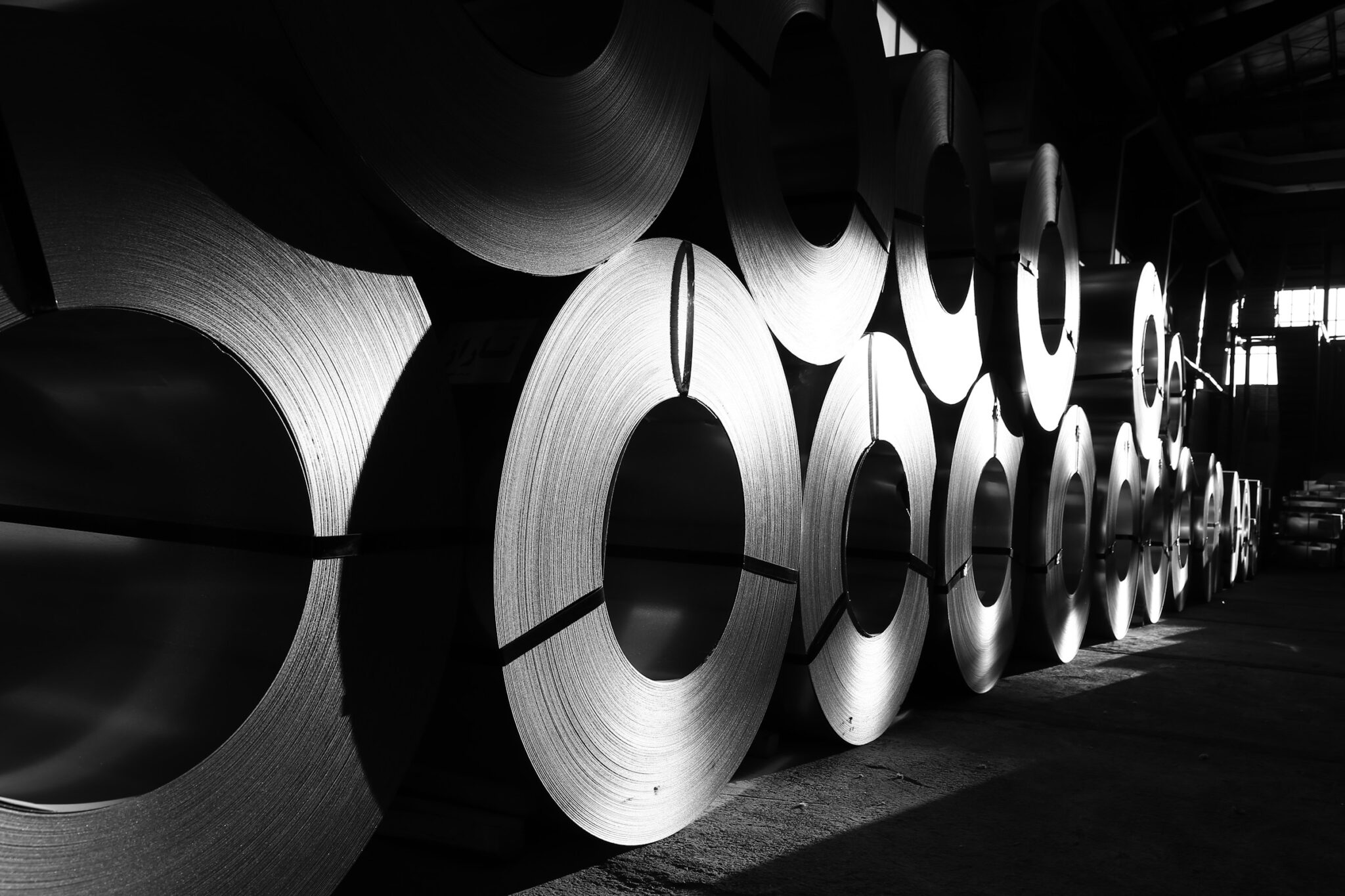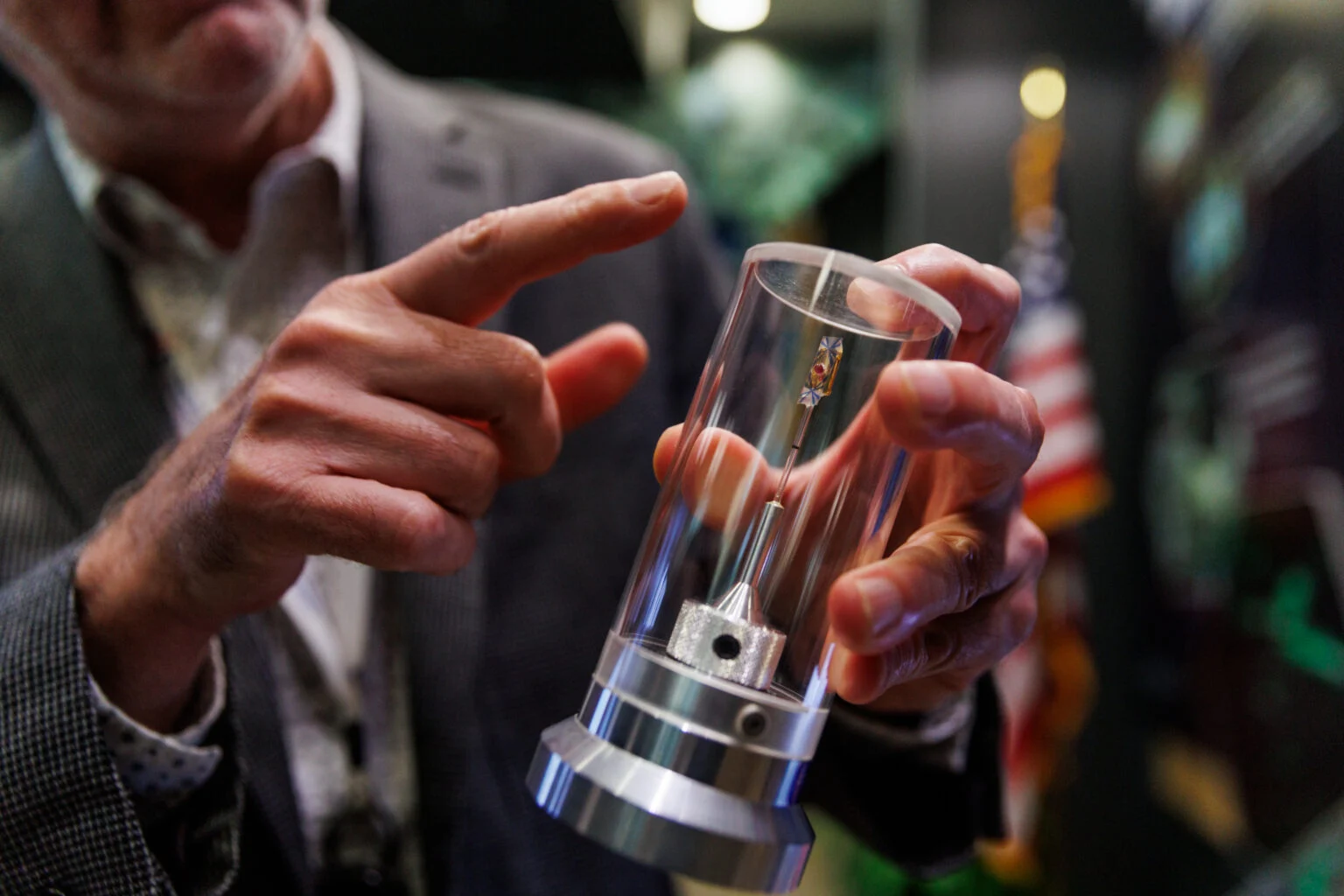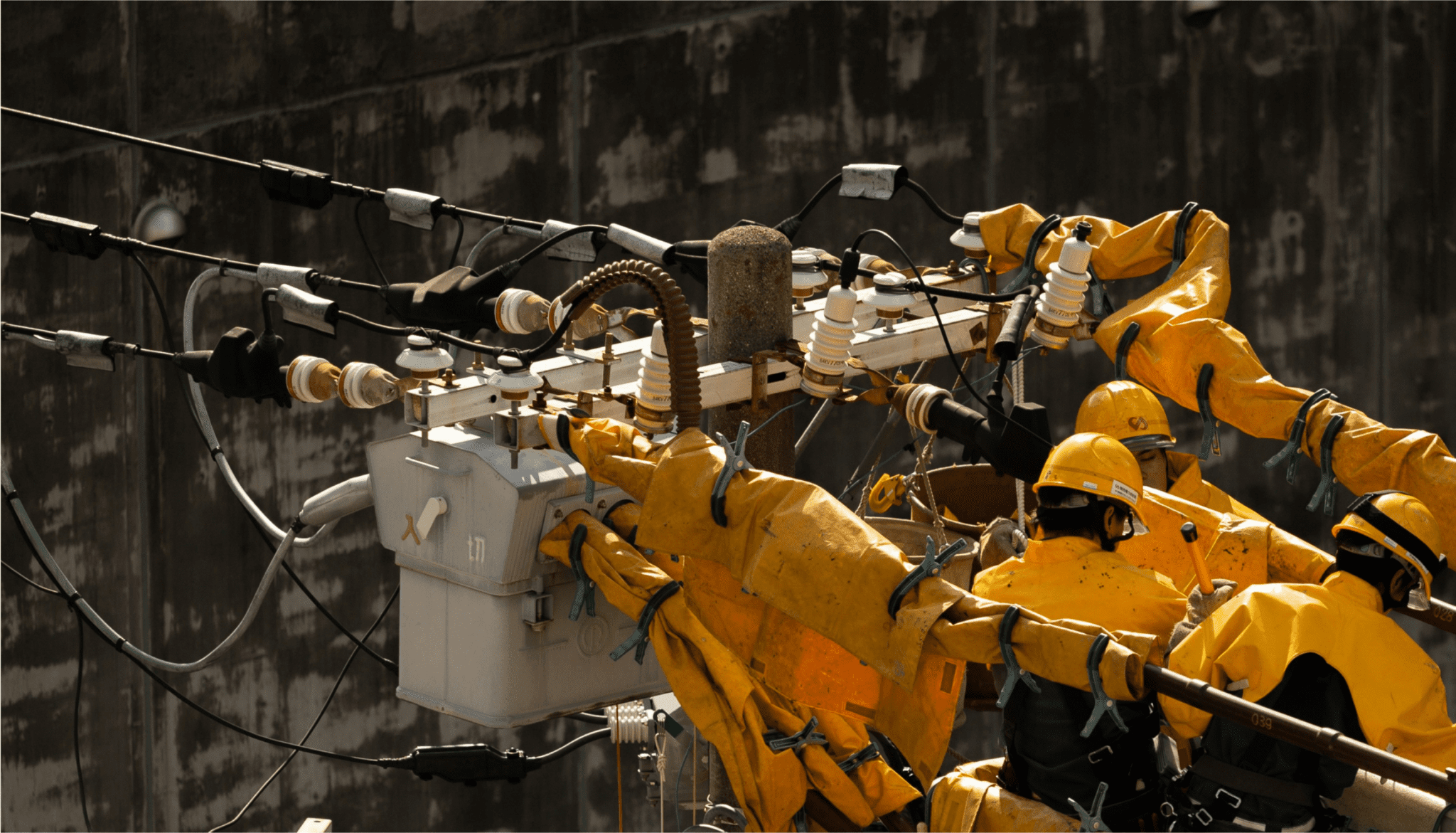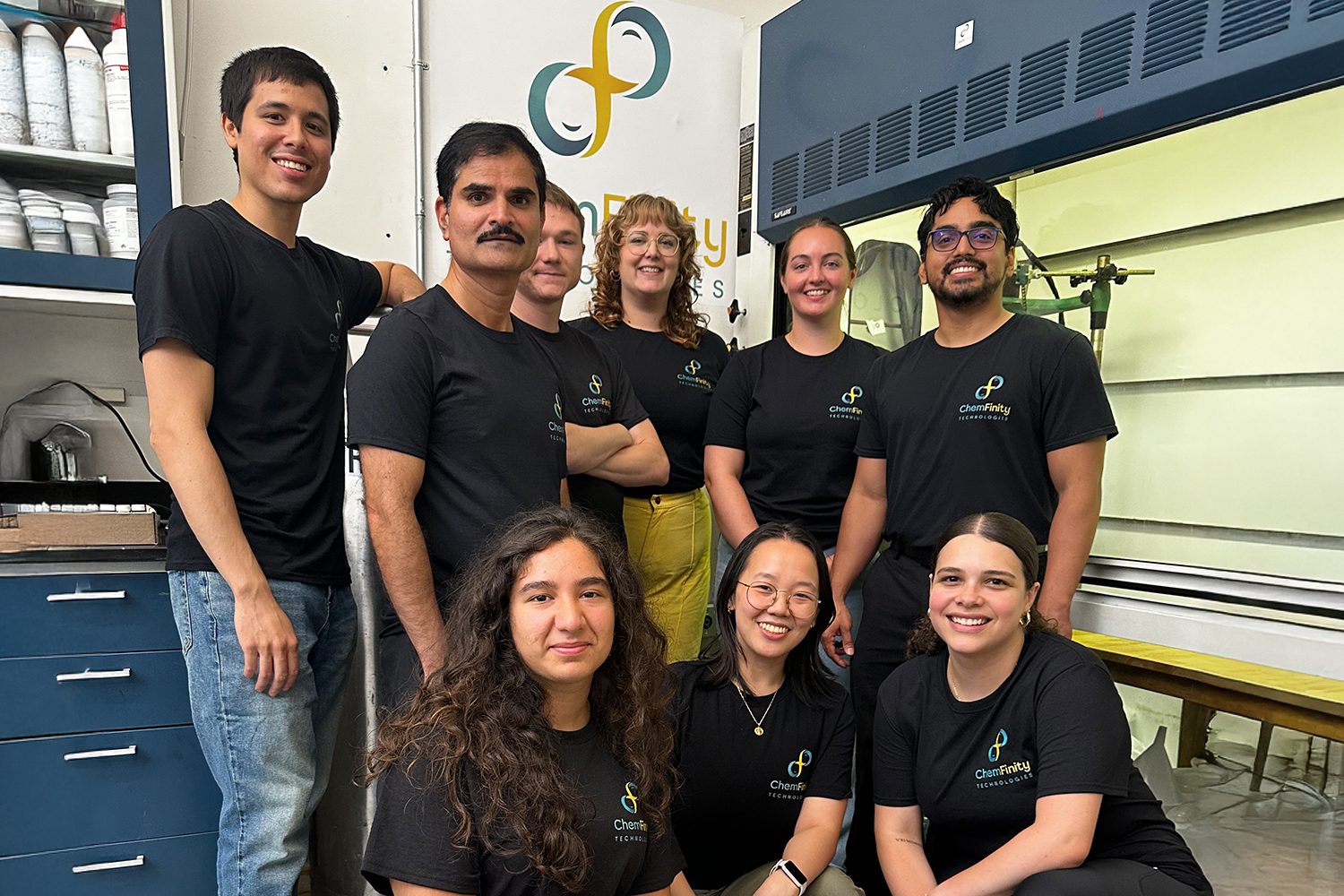On Monday, President Biden signed into law the bipartisan Infrastructure Investment and Jobs Act. This historic bill will make a significant investment in clean energy technologies to cut greenhouse gas emissions with $115 billion for climate and energy programs, substantial investments to enhance the nation’s electric transmission grid and fund research, development, and demonstration for critical early-stage clean energy technologies.
But there is still more to do. Following the infrastructure bill, Congress must pass the Build Back Better Act to enable solutions that match the scale and urgency of the climate crisis. This second bill, currently under consideration by Congress, includes another $555 billion for clean energy solutions, including $320 billion for clean energy tax credits over 10 years.
Together, the Build Back Better Act and the Infrastructure Investment and Jobs Act will accelerate development of the climate solutions we need to achieve net-zero emissions by 2050. These federal investments will make mature and emerging clean energy technologies more affordable so they can be adopted faster.
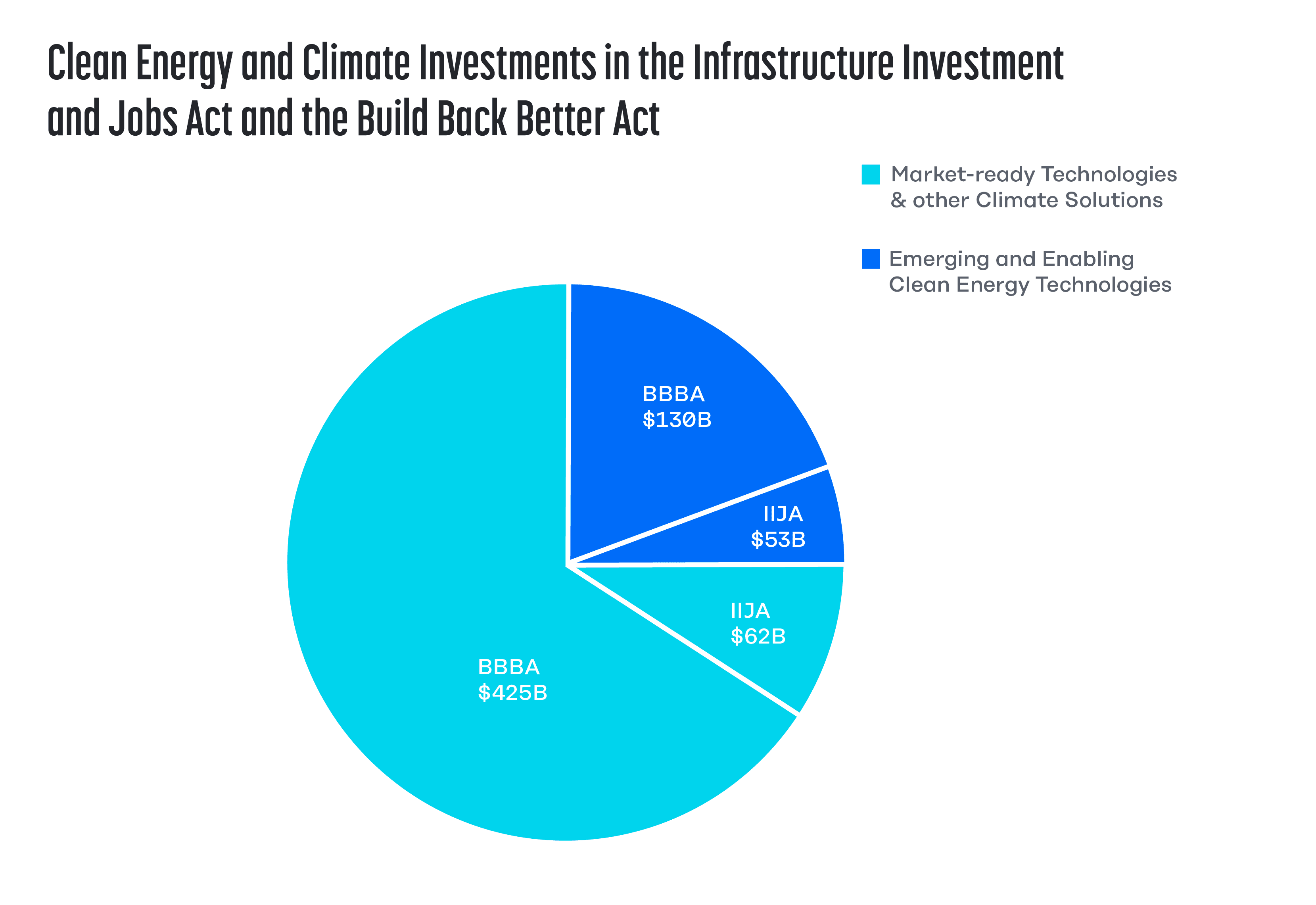
Figure 1: The Infrastructure Investment and Jobs Act (IIJA) makes a crucial down payment to develop emerging and enabling clean technologies, including transmission. The larger level of investment in the Build Back Better Act (BBBA) is necessary to ensure these emerging technologies transform into commercial-scale industries.
Achieving Net-zero by 2050: Clean hydrogen, storage, and other emerging technologies
The Build Back Better Act and the Infrastructure Investment and Jobs Act include specific programs and incentives designed to develop and scale-up key climate technologies that we need to reach net-zero.
For example, the U.S. may need up to two billion metric tons of carbon capture annually by 2050 to reach net-zero emissions, representing an enormous increase over current levels. Another emerging technology, clean hydrogen, is poised to be an essential tool for reducing emissions in the hardest to decarbonize sectors—steelmaking, long-distance trucking, maritime shipping, and aviation. To achieve net-zero emissions, modeling from the Princeton Net-Zero America Project estimates we may need to make over 10 times as much hydrogen in 2050 as we do today and produce all of it from clean sources.
The bipartisan infrastructure bill provides more than $40 billion to demonstration projects and research for next generation clean energy technologies, including clean hydrogen, carbon capture, and long-duration energy storage; the Build Back Better Act complements the infrastructure bill with tax credits to advance these emerging technologies to commercial scale. Together, these investments to de-risk new technologies through demonstration, and then support to scale them up and widen adoption through tax credits, will help shorten the time-to-market for key technologies needed to achieve net-zero by 2050.
Halfway to zero by 2030
To achieve a net-zero future by 2050, we also need to rapidly reduce emissions by 2030. The two bills enable the rapid deployment of market-ready clean energy solutions like wind and solar power generation, electric vehicles, and building electrification. They will also remove key obstacles to building necessary transmission lines to unlock more renewable sources of generation, bringing clean electricity to the places where people need it.
Since peaking at about 6.5 billion metric tons per year in 2005, U.S. greenhouse gas emissions have been cut to roughly 5 billion metric tons per year today, according to Rhodium Group’s ClimateDeck. Achieving the U.S. 2030 emissions target under the Paris Agreement will require further reducing greenhouse gas emissions to about 3 billion metric tons per year in under a decade. This is a monumental task, but current provisions within the Build Back Better Act, along with final enacted investments in the Infrastructure Investment and Jobs Act, would bring the 2030 goal within reach.
Together, the Build Back Better Act and the Infrastructure Investment and Jobs Act are estimated to cut greenhouse gas emissions by over a billion metric tons by 2030. An additional suite of regulatory actions such as the recently announced methane rules for the oil and gas industry could help close the gap.
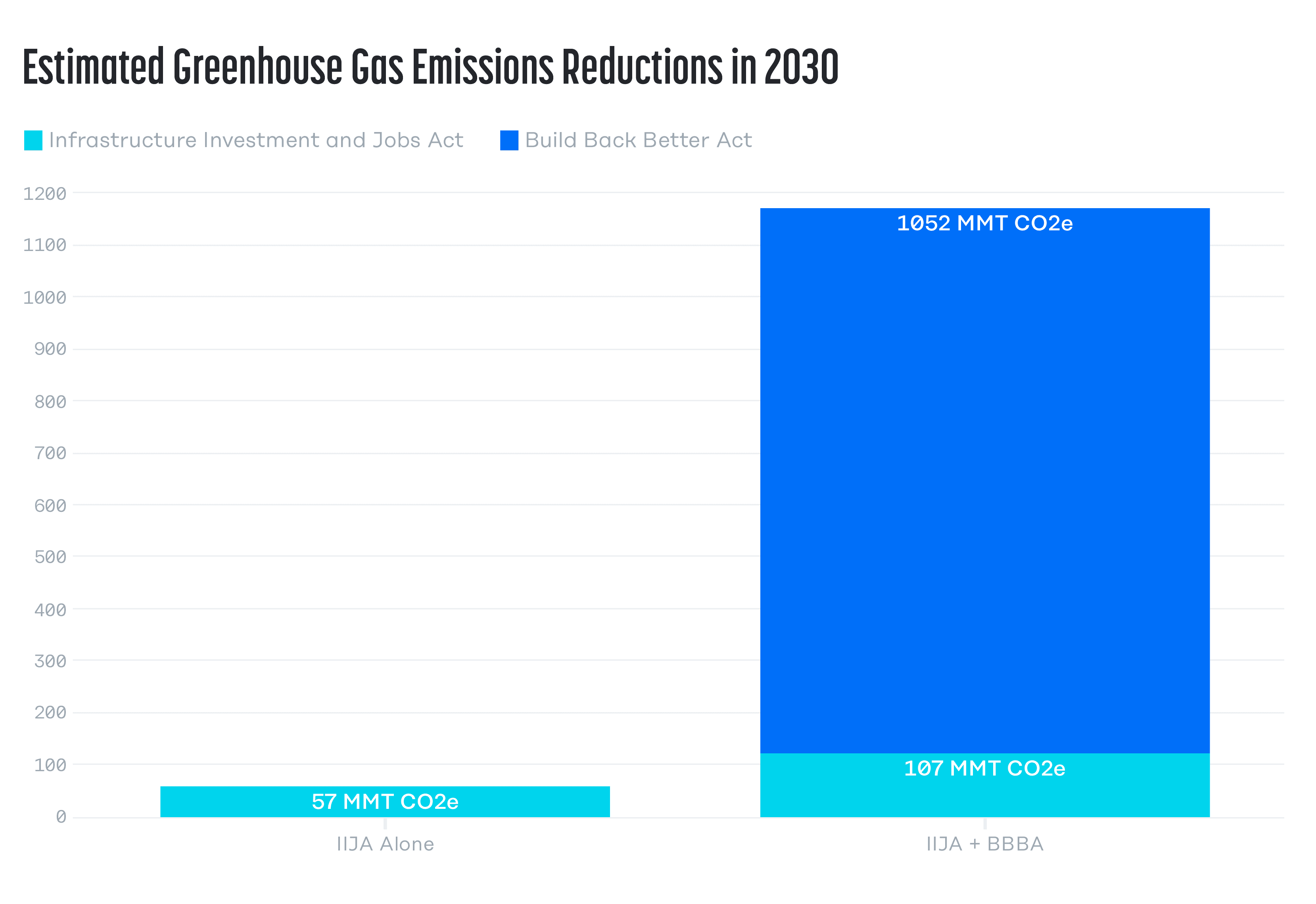
Figure 2: The expected emissions reductions from the IIJA are doubled when combined with the BBBA provisions. While BBBA delivers the majority of reductions by 2030, the IIJA will advance emerging technologies that are crucial to achieving net-zero emissions by mid-century. Estimated greenhouse gas emissions reductions are based on an analysis by Princeton University’s REPEAT Project which assessed previously proposed legislation similar to the current Build Back Better Act.
Provisions in the Build Back Better Act provide most near-term climate benefits, cutting annual emissions by about a billion metric tons in 2030, according to Princeton University’s REPEAT Project. The clean energy tax credits contained in the bill are a major driver of these near-term emissions reductions. Princeton’s analysis found the tax credits would result in more than twice as much added wind and solar generation capacity by 2030. Additionally, the tax credits, grants and other measures supporting transmission in the two bills are projected to result in a more than doubling of transmission capacity.
Princeton’s REPEAT Project suggests the policies incentivizing clean hydrogen production, including tax credits and funding for hydrogen hubs, will support a roughly 50% increase in clean hydrogen production by 2030. The 45Q tax credits included in the Build Back Better Act would result in an estimated 25 million metric tons of additional carbon capture by 2030.
Through its investments in electric vehicles, accompanying charging infrastructure, and transmission, the Infrastructure Investment and Jobs Act on its own is projected to drive down annual emissions by about 60 million metric tons in 2030, according to Princeton’s analysis. Moreover, the bipartisan infrastructure bill is estimated to have nearly double the climate impact if enacted in combination with the policies in the Build Back Better Act.
We Can’t Miss This Opportunity for Climate Action
Climate change is a complex challenge that calls for advancing a diverse set of solutions over multiple timeframes. We need mature, market-ready solutions that reduce emissions today, as well as emerging clean technologies for full decarbonization by 2050.
Building new, clean industries will take decades, because we must transform early-stage innovative technologies into mature, affordable solutions that are available at commercial scale. The development of emerging clean energy technologies is not only necessary for climate but also represents a significant economic and job creation opportunity. Congress must help us avoid a climate disaster through passing the Build Back Better Act, to complement the investments in the bipartisan infrastructure bill.

